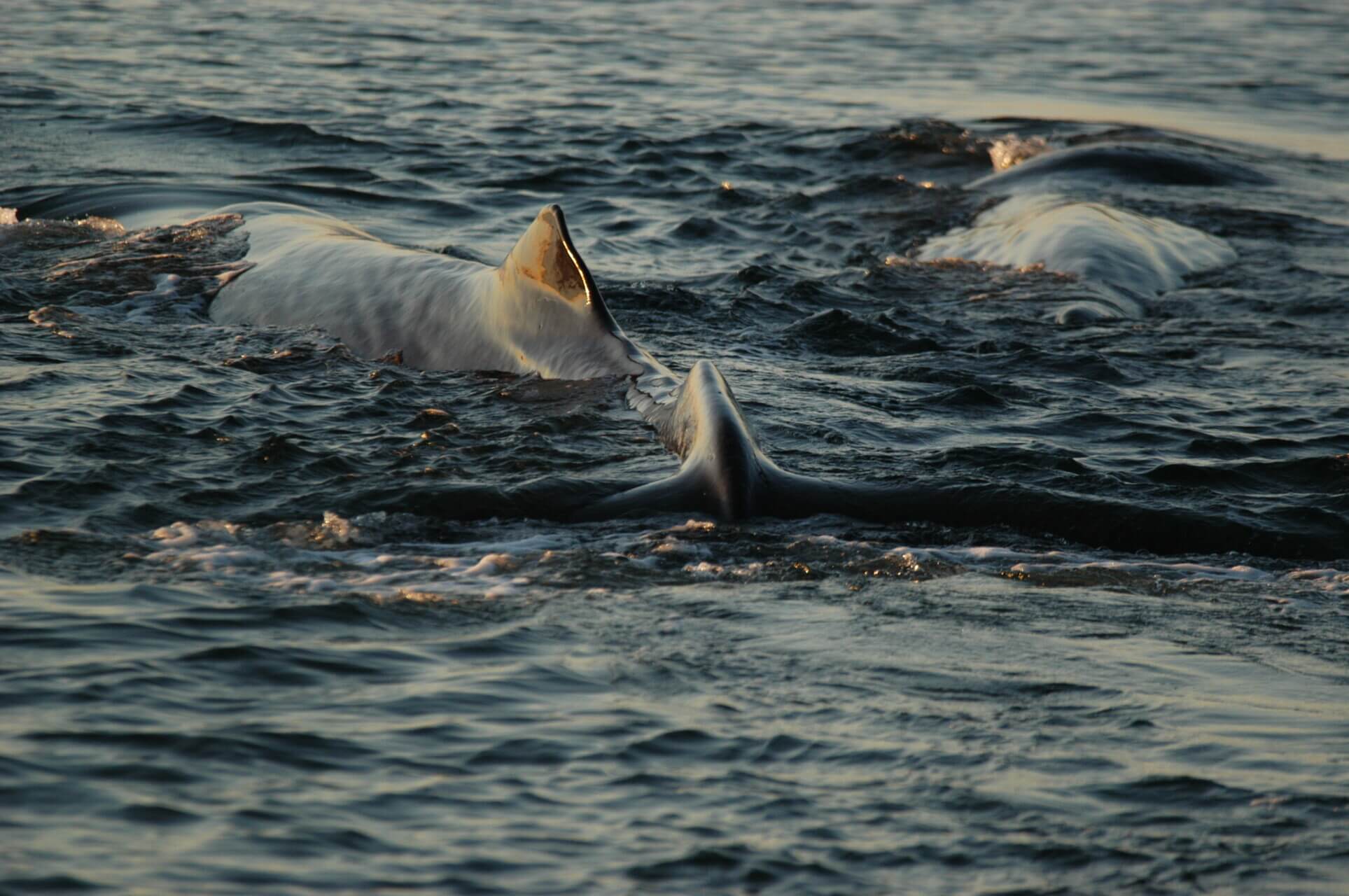Recently they have been observed gathered in groups of over 50 individuals, hunting in the tide rips. In the fall, grey seals take advantage of the cold, rich waters of the Estuary to feed before migrating to their winter reproduction and calving areas. In this regard, they head to the southern portion of the Gulf of St. Lawrence between Cape Breton and Prince Edward Islands, to the Northumberland Strait, Amet Island and Corps Mort Island.
Between April and June, grey seals moult on dry land. In the summer, they remain more or less solitary. They can be easily observed off shore, or close to shoal areas in the St. Lawrence Estuary and the Gulf of St. Lawrence. Some seals, mainly males, move up the Estuary, where they congregate between Île aux Fraises and the mouth of the Saguenay. They may leave haulout sites in search of food for several days at a time, or even longer when they travel upwards of forty kilometres or so from their rest areas. Solitary or in groups, they share with whales and seabirds a “buffet” of herring, capelin, crustaceans, etc.
Grey seals are abundant in the St. Lawrence. In the Gulf, the size of the herd is estimated to number approximately 98,000 individuals and the population of the Northwest Atlantic is estimated at 505,000 individuals (Fisheries and Oceans Canada, 2014).





